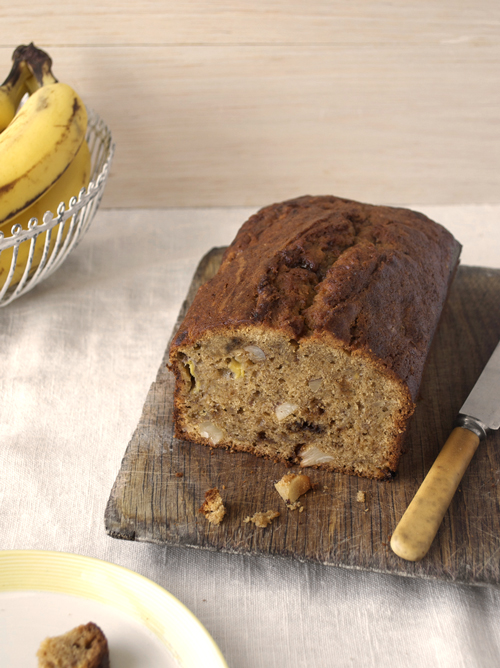Everyone likes bananas, right? It’s meant to be the most popular fruit in the UK (according to sales anyway), but I’ve met a fair few people in my time who detest them with a passion. I’m sitting on the fence between loving and loathing these tropical boomerangs: a banana cooked slowly on the glowing embers of a BBQ stuffed with slabs of dark chocolate and a generous slosh of rum, then I’m definitely in the love camp; and, as a child I have fond memories of tucking into a big bowl of chopped bananas drowned in lashings of golden Bird’s Eye custard. But now, to eat a banana in its natural state really fills me with revulsion – do I sound overly dramatic? Perhaps.
On holiday in Belize recently, with my banana-a-day boyfriend, I tasted bananas full of flavour and musky sweetness, and if they weren’t served with our breakfast tropical fruit platter I queried their noticeable absence. But what sealed my reignited love was the most delicious banana bread I’d ever eaten – pleasingly moist, with an intense banana flavour and a texture; somewhere between bread and a light, fluffy cake. I requested an extra slice to make its way into our lunchboxes that day. With our stomachs rumbling, after a strenuous hike and bike ride up leg-screaming hills in the baking Belizean heat, we arrived at a jaw-dropping beautiful waterfall. We sat on some rocks, admired the beauty and ate our banana bread with smiles on our glowing faces.
Back home, I knew it would be tricky to recreate the deep banana flavour using our bland supermarket varieties, but there’s certainly no harm in trying. I think organic bananas have a better flavour, so I used these, along with creamy Brazil nuts to add a welcome crunch to the bread, and also because they seemed a more ‘tropical’ partner than, say, walnuts. I’ve used a blend of light muscovado sugar and molasses; the latter adding depth of flavour and appealing pockets of dark brown sugar throughout the bread. Using a mixture of both butter and oil gives you the best of both worlds – a bit of richness from the butter as well as extra moisture from the oil. The result was moist, moreish and utterly delicious. Was it as good as the Belizean version? Not quite, but then again, the only waterfall I can see right now is the trickling rain down the windowpane – but it tastes exceptionally good and has brought a slice of sunshine into my kitchen as well as a beaming smile to my face.
3 very ripe bananas (300g peeled weight)
60g butter, melted
70ml sunflower oil
2 eggs, beaten
100g light muscovado sugar
70g molasses sugar
200g plain flour
1.5 tsp baking powder
1 tsp fine salt
60g brazil nuts, roughly chopped
- Grease and line a 450g/1lb loaf tin with non-stick paper, and preheat the oven to 180C/gas mark 4.
- Sift the flour, baking powder and salt in a bowl.
- Mash two-thirds of the bananas in a medium bowl until smooth. Cut the remaining banana into small chunks and add to the bowl. Stir in the Brazil nuts and set aside.
- Put the sugar, eggs, oil and melted butter in a large bowl and use an electric mixer to whisk them until slightly increased in volume. Fold in the dry ingredients, followed by the banana and Brazil nut mixture until you can see no more flour.
- Spoon into the tin and bake for about an hour until a skewer inserted into the middle comes out clean. Cool in the tin for 10 minutes before turning out on to a rack to cool completely.





